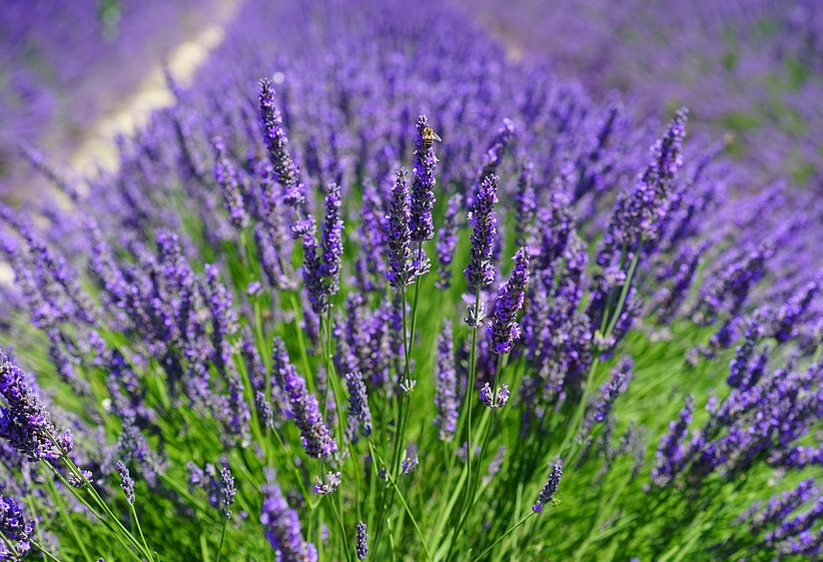Effect of plant growth regulators on in vitro regeneration of Lavandula dentata L. shoot tips
DOI:
https://doi.org/10.20873/jbb.uft.cemaf.v2n3.machadoKeywords:
Micropropagation, in vitro establishment, explants, aromatic plantsAbstract
Tissue culture has been used for various purposes, and explant regeneration, in the culture establishment phase, is a determining step for the technique. One of the difficulties encountered in the initial phase, besides contamination by microorganisms, is the regenerative capacity of isolated explants, which usually require an exogenous source of growth regulator for their development. The objective of this work was to evaluate the effect of growth regulators on the regeneration of Lavandula dentata stem apexes. Stem apexes were isolated in LS culture medium, plus 20 g L-1 sucrose, 2.5 µM indolbutyric acid (IBA) and 6 g L-1 agar. Different concentrations of 6-benzylaminopurine (BAP) combined or not with 0.3 µM gibberellic acid (GA3) were tested. The experimental design was randomized blocks with four replications of 10 explants per plot. The highest shoot height was 2.7 cm obtained with 0.5 µM BAP + 2.5 µM IBA + 0.3 µM GA3. The largest number of leaves per shoot was obtained with 1.0 µM BAP + 2.5 µM IBA, being ca. 8 leaves per bud. The highest percentage of regenerated explants was obtained with the 10.0 µM BAP + 2.5 µM IBA + 0.3 µM GA3 treatment, in which 90% of the explants formed new shoots. It was concluded that the combination of the growth regulators tested promoted the initial development of stem apexes, and in the presence of GA3 longer shoots were obtained.
References
Alves, S. A. O.; Lemos, O. F. de; Santos Filho, B. G.; Silva, A. L. L. da. (2011), In vitro embryo rescue of interspecific hybrids of oil palm (Elaeis oleifera x Elaeis guineensis). Journal of Biotechnology and Biodiversity, 2, 1-6.
Calvo, M. C.; Segura, J. (1989), In vitro propagation of lavender. HortScience, 24, 375-376.
Carvalho, J. M. F. C. de. (1999), Técnicas de micropropagação. Campina Grande: EMBRAPA Algadão, 39p. (Documentos 64).
Echeverrigaray, S.; Basso, R.; Andrade, L.B. (2005), Micropropagation of Lavandula dentata from axillary buds of field-grown adult plants. Biologia Plantarum, 49, 439-442.
Grattapaglia, D.; Machado, M. A. (1998), Micropropagação. In: Torres, A. C.; Caldas, L. S.; Buso, J. A. Cultura de tecidos e transformação genética de plantas. v. 1, Brasília: EMBRAPA, 508 p.
Jordan, A. M.; Calvo, M. C.; Segura, J. (1998), Micropropagation of adult Lavandula dentata plants. Journal of Horticultural Science & Biotechnology, 73, 93-96.
Linsmaier, E.M.; Skoog, F. (1965), Organic growth factors requirements of tobacco tissue cultures. Physiologia Plantarum, 18, 100-127.
Nagao, E. O.; Pasqual, M.; Ramos, J. D. (1994), Efeitos da sacarose e do nitrogênio inorgânico sobre a multiplicação in vitro de brotações de porta-enxerto de citros. Bragantia, 53, 25-31.
Oliveira, P. P.; Pasqual, M. E.; Paiva, R. (1995), Efeito de diferentes reguladores de crescimento sobre a proliferação in vitro de brotos de Crisântemo (Dendranthema grandiflora tzevelev). Ciência e Prática, 19, 390-396.
Pierik, R. L. M. (1990), Produccion de plantas libres de enfermedades In: Pierik, R.L.M. (Ed.) Cultivo in vitro de las plantas superiores. Madrid: Ediciones Mundi-Pronsa, 1990. p.169-180.
Sudriá, C.; Piñol, M. T.; Palazon, J.; Cusido, R. M.; Vila, R. ; Morales, C.; Bonfill, M.; Canigueral, S. (1999), Influence of plant growth regulators on the growth and essential oil content of cultured Lavandula dentata plants. Plant Cell, Tissue and Organ Culture, 58, 177-184.
Quazi, M. H. (1980), In vitro propagation of Lavandula spp. Annals of Botany, 45, 361-362.

Published
How to Cite
Issue
Section
License
Copyright (c) 2024 - Journal of Biotechnology and Biodiversity

This work is licensed under a Creative Commons Attribution 4.0 International License.
Authors who publish with this journal agree to the following terms:
Authors retain copyright and grant the journal right of first publication with the work simultaneously licensed under a Creative Commons Attribution License (CC BY 4.0 at http://creativecommons.org/licenses/by/4.0/) that allows others to share the work with an acknowledgement of the work's authorship and initial publication in this journal.
Authors are able to enter into separate, additional contractual arrangements for the non-exclusive distribution of the journal's published version of the work (e.g., post it to an institutional repository or publish it in a book), with an acknowledgement of its initial publication in this journal.
Authors are permitted and encouraged to post their work online (e.g. in institutional repositories or on their website) prior to and during the submission process, as it can lead to productive exchanges, as well as earlier and greater citation of published work (Available at The Effect of Open Access, at http://opcit.eprints.org/oacitation-biblio.html).


